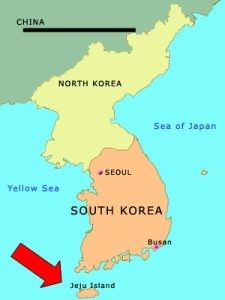
The “Haven for Newlyweds” Art Park contained more than one hundred sculptures by Korean artists scattered throughout the lush park with its paths in rolling hills and forests.
This map shows Jeju’s proximity to the South Korean mainland.
This volcanic island reminded me more of Hawaii with its mountains and foliage. Like Hawaii and other Pacific Islands, its original population was impressively maritime. The community of female divers (Haenyeo) was engaged in diving thirty feet or more for one or two minutes to retrieve shellfish and other edible treasures. UNESCO has identified them as a national treasure.
They formed a unique matriarchal society outside the boundaries of the Korean peninsula.
Jeju’s idyllic existence became a hot spot for newlywed couples who wanted relief from South Korean society and family. During the spring and summer, thousands of couples arrived at the airport with the expectation of a free and restful environment. At the exit, the visitors passed by a monumental figure that possessed an obvious naked groin. The couples passed through touching this area. It was a charm for a male child.
The “Haven for Newlyweds” Art Park contained more than one hundred sculptures by Korean artists scattered throughout the lush park with its paths in rolling hills and forests. The artistic theme featured the energies and joys of marriage. The result was wandering through an introduction to marriage life.
A line of honeymooners formed in front of three nude male baby boys frolicking around a growth of grape vines in the carefree abandonment of Dionysian pleasure. The couples could interact with the infants by touching a penis to be blessed with the promise of a male child. A resident photographer was stationed at this statue to take pictures recording the event for their scrapbook.
“The Mountain” depicts two nude lovers reclining in each other’s arms with their faces looking upward to the heavens. I asked a newly married couple named Lee to assume a similar pose next to the statue. Mr. Lee, who was not as enthusiastic as his wife about the re-creation, immediately softened as he investigated her face.
She responded: “Seeing this statue makes me want to settle down and start a family. I want to start nesting.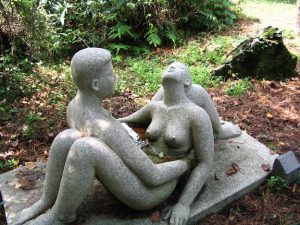
I enjoyed the sense of the modern when one bride told me that after this honeymoon. she would order her husband to stop smoking.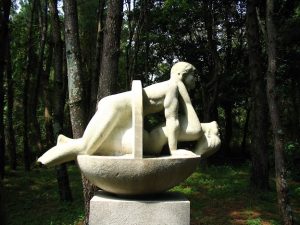
An unexpected statue on a hilltop called “Morning” silhouetted two lithe females: a spirit hovering over a prone nude body lifting her in the air by the waist. Of course, traditionalists complained. The progressives welcomed this modern touch of sexuality.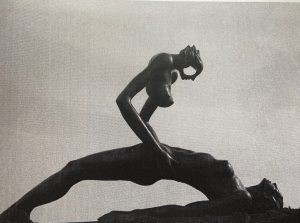
In this forest of marital bliss was a celebration of marriage that was primarily between husband and wife—not the larger family. And with an emphasis on the feelings of love, personal curiosity of each other, and the sense of the importance of building a new life for each other and their family.


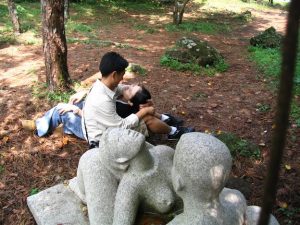
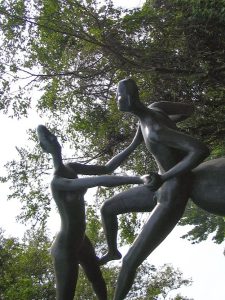

Thank you for introducing us to this far-away place, so different from our own (increasingly prudish)country, where newlyweds go to honeymoon and perhaps get the blessings of fertility. The sculptures are interesting and impressive and the couples reactions that you encountered are diverse and charming. You constantly teach us with your vast knowledge of different cultures and your travels to different countries, Richard.
Betsy: Thank you for your comments. I am an extrovert (duh!) I interact with my students and adventures. There is so much to enjoy.
Thanx Richard for your South Korean take on marriage traditions. It is fascinating and rather romantic, save for the belief that male children are more desirable! Hope that’s no longer the thinking of newlyweds visiting Jeju today!
This is fascinating. I will have to ask my Korean son-in-law about it!
I have visited this place too Richard, but didn’t get as much of the story—or people posing in emulation of the statues! It is certainly isn’t the sort of thing we find in North America—yet another reason to keep minds and eyes open.